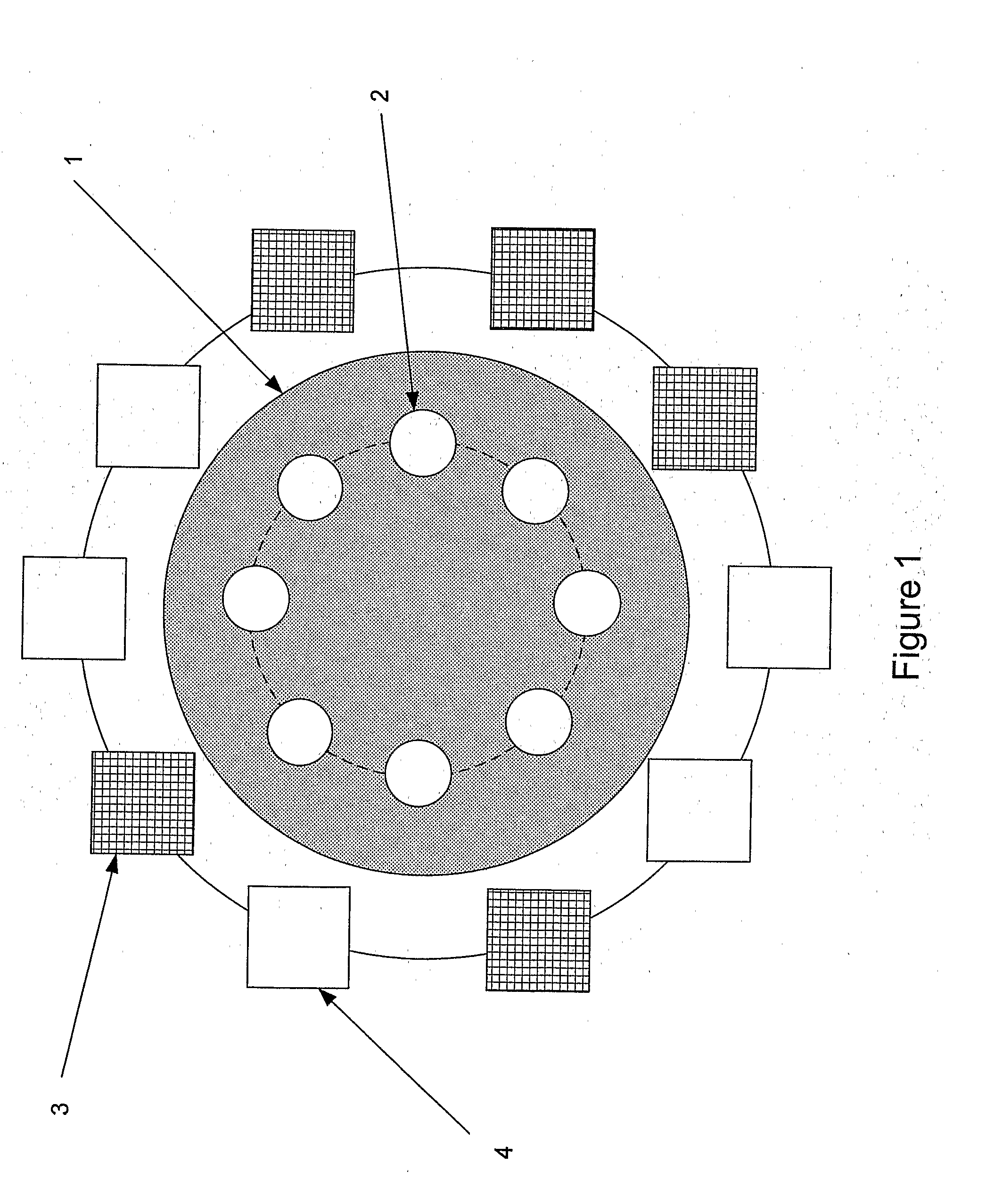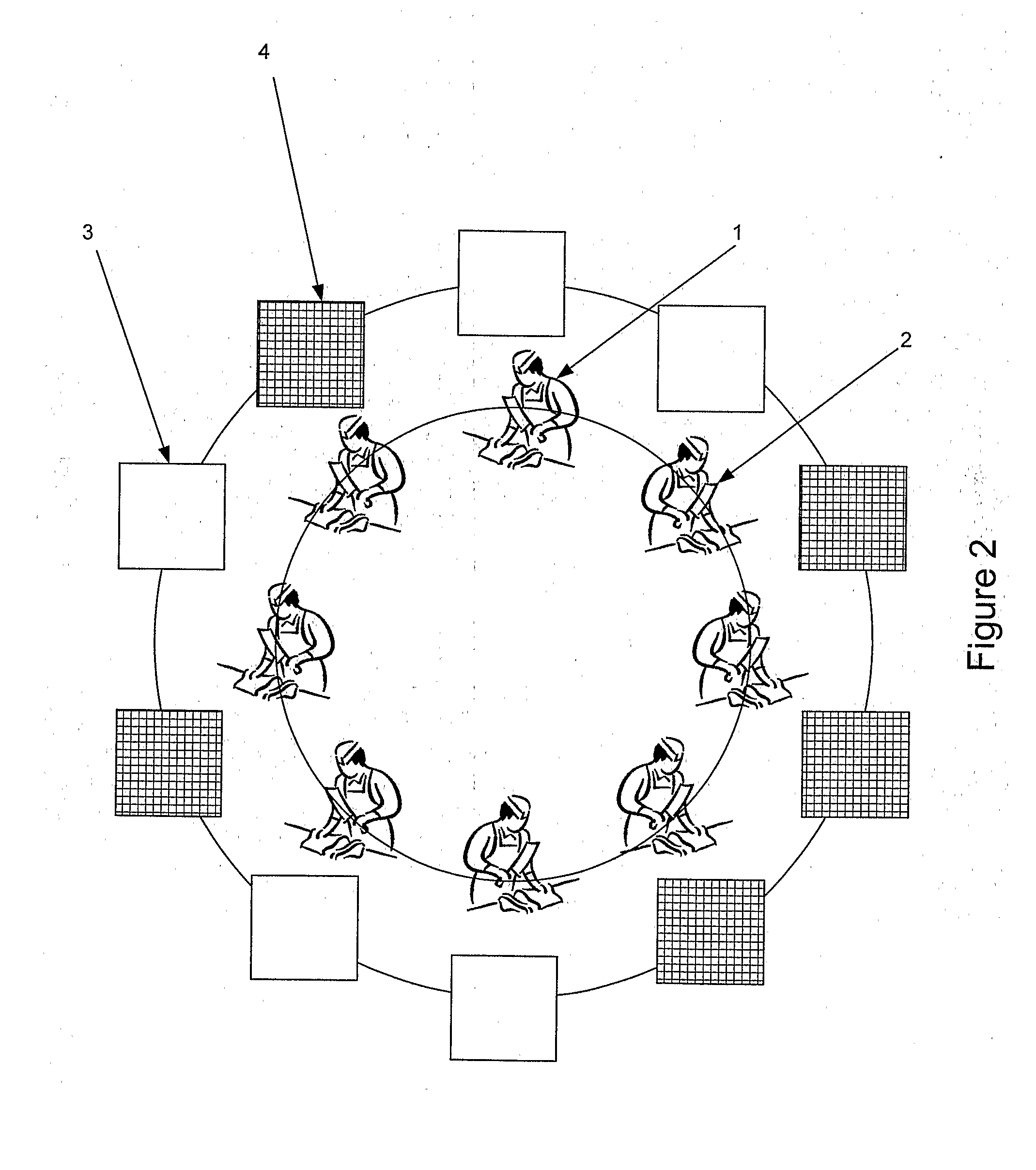Tracing Items Through a Non-Sequential Process
a non-sequential process and item technology, applied in the field of tracking items through a non-sequential process, can solve the problems of inept prior art solutions and difficult tracking of items
- Summary
- Abstract
- Description
- Claims
- Application Information
AI Technical Summary
Benefits of technology
Problems solved by technology
Method used
Image
Examples
Embodiment Construction
[0047]The implementations of the invention being described in the following text can obviously be varied in many ways. Such variations are not to be regarded as a departure from the spirit and scope of the present invention, and all such modifications as would be obvious to one skilled in the art are intended to be included within the scope of the following claims.
[0048]FIGS. 1-3 show various processing systems, to which the present invention can be adapted to. FIG. 1 shows an embodiment, where the handling means (1) is mechanical / electrical device. In this configuration the control device can directly control the device according to the instructions provided by the computer program product running on the computer via hardware / software interface. The handling means in this embodiment selects items from the in-feed locations (3), processes them according to some predetermined scheme in the one or more processing means (2). Finally, after processing the items the handling means places...
PUM
 Login to View More
Login to View More Abstract
Description
Claims
Application Information
 Login to View More
Login to View More - R&D
- Intellectual Property
- Life Sciences
- Materials
- Tech Scout
- Unparalleled Data Quality
- Higher Quality Content
- 60% Fewer Hallucinations
Browse by: Latest US Patents, China's latest patents, Technical Efficacy Thesaurus, Application Domain, Technology Topic, Popular Technical Reports.
© 2025 PatSnap. All rights reserved.Legal|Privacy policy|Modern Slavery Act Transparency Statement|Sitemap|About US| Contact US: help@patsnap.com



